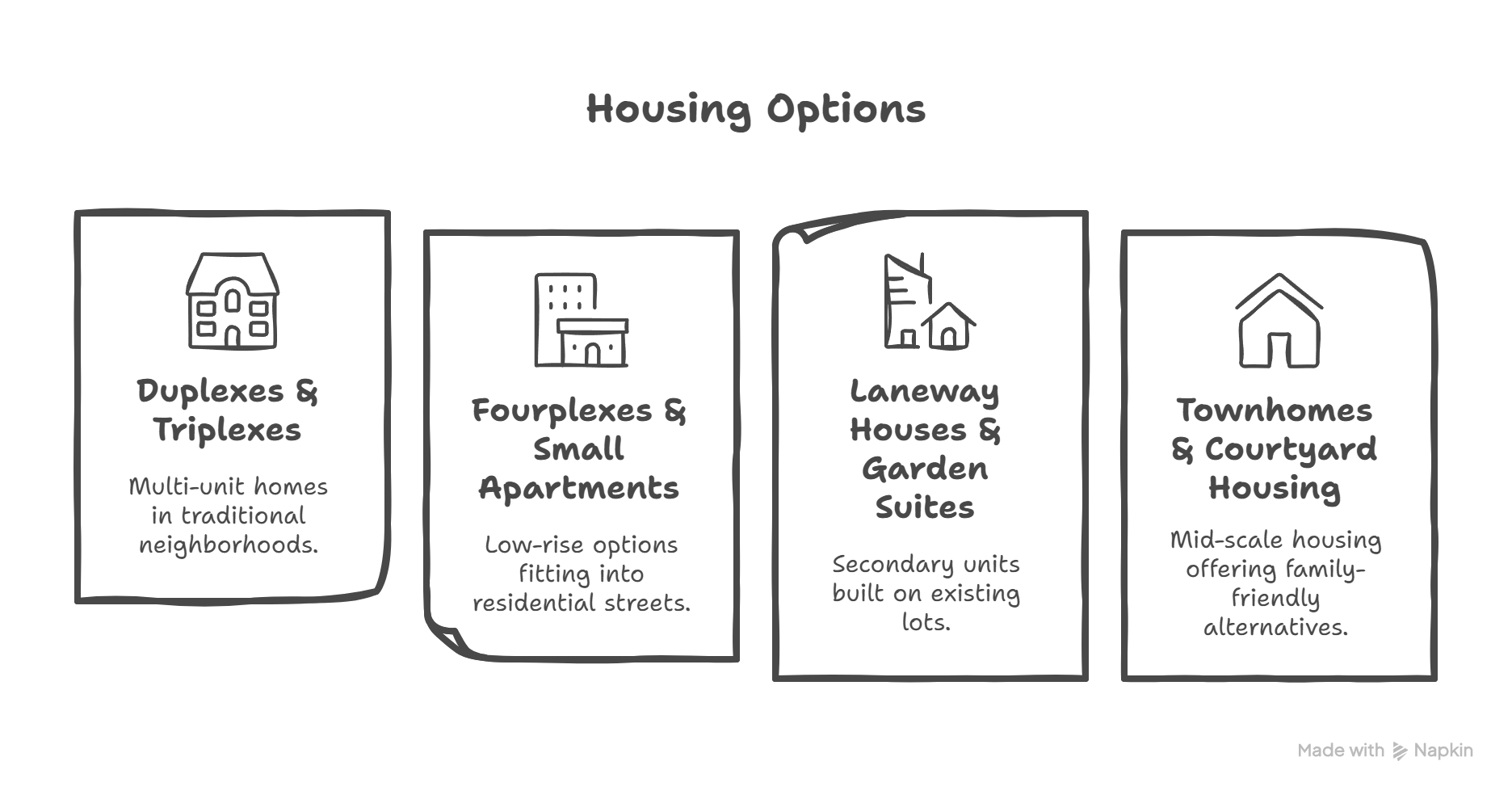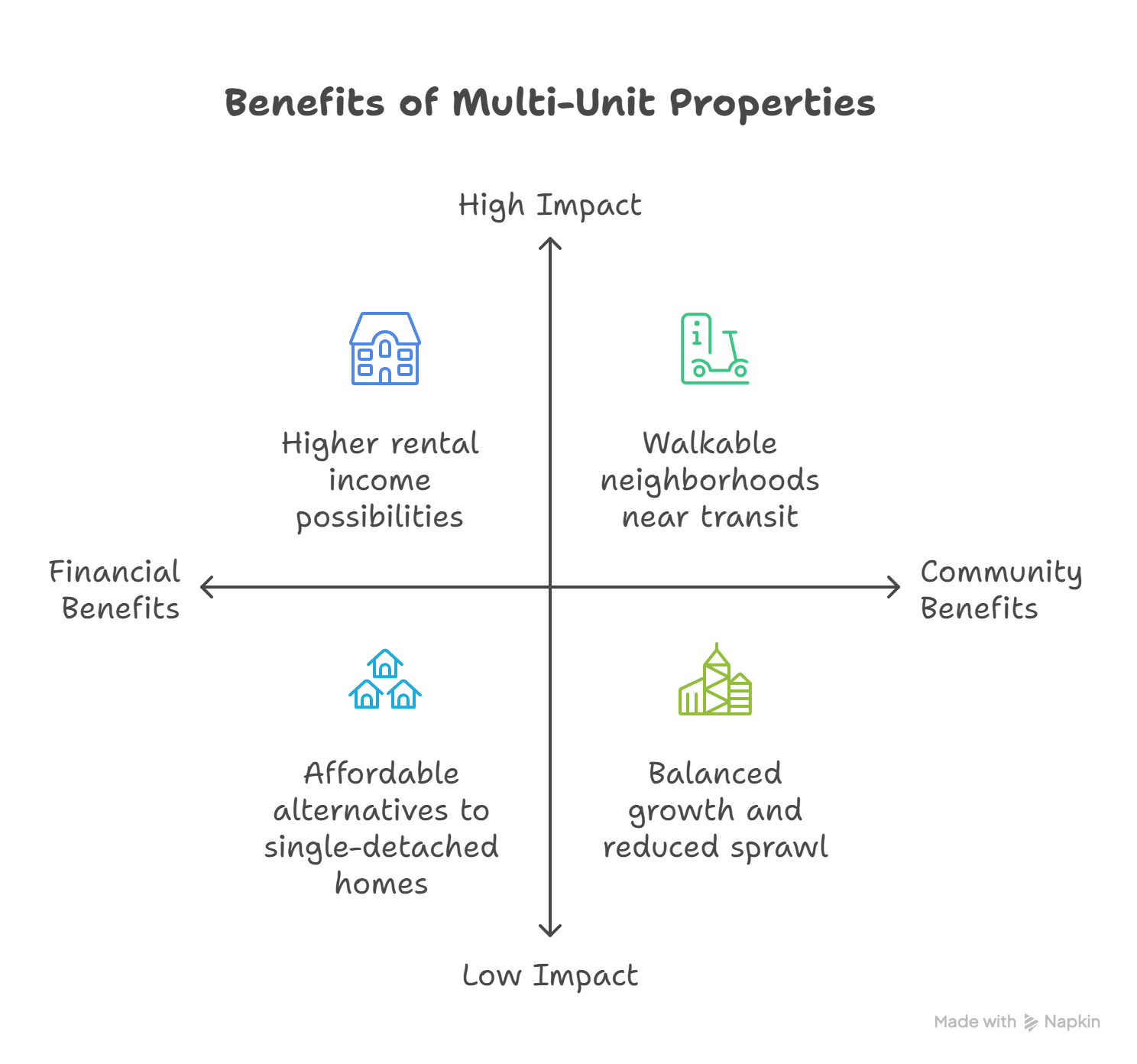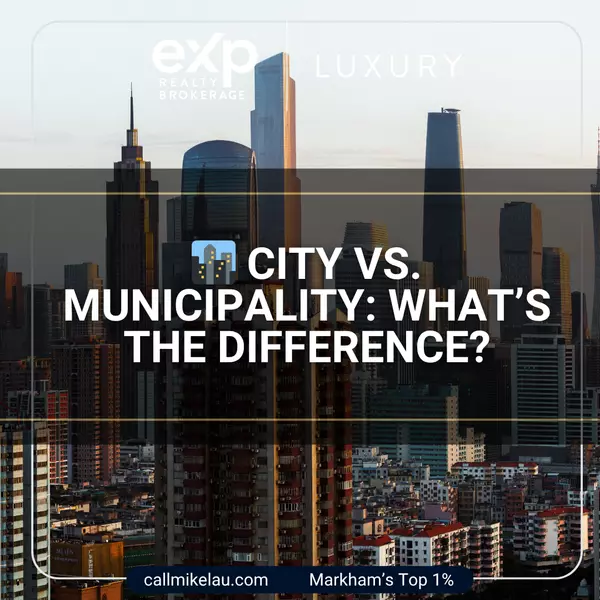The Missing Middle: Why Toronto and Markham’s 2025 Housing Policies Are Reshaping Real Estate
The Missing Middle: Why Toronto and Markham’s 2025 Housing Policies Are Reshaping Real Estate
Introduction
On August 20, 2025, one of the most pressing real estate issues dominating conversations in Toronto and the Greater Toronto Area (GTA) is the rise of “missing middle” housing. For decades, Toronto’s housing landscape has been divided between high-rise condos and single-detached homes, leaving out vital middle-density options such as duplexes, triplexes, fourplexes, garden suites, laneway homes, and small apartment buildings.
Today, thanks to zoning reforms, transit-oriented development programs, and housing policy shifts, Toronto and Markham are embracing these middle-density solutions as a way to improve affordability, increase supply, and support sustainable urban growth.
What is “Missing Middle” Housing?
The term “missing middle” refers to housing options that fall between single-family homes and high-rise towers.
Examples include:
- Duplexes & Triplexes – multi-unit homes within traditional neighborhoods.
- Fourplexes & Small Apartments – low-rise options that fit seamlessly into residential streets.
- Laneway Houses & Garden Suites – secondary units built on existing lots.
- Townhomes & Courtyard Housing – mid-scale housing that offers family-friendly alternatives to condos.

These housing types are more affordable, community-oriented, and adaptable for growing families, retirees, and renters.
Toronto’s Push for Missing Middle Housing
In recent years, the City of Toronto has implemented bold reforms to unlock housing diversity:
1. Legalization of Multiplexes (2023–2025)
All neighborhoods now permit up to four housing units per lot, ending single-family exclusivity.
This creates opportunities for homeowners and developers to add gentle density across the city.
2. Transit-Oriented Communities (TOC) Program
Encourages mixed-use development near subway and GO stations.
Pair housing growth with easy access to transit, reducing congestion and supporting walkable communities.
3. Citywide Flexible Zoning Policies
Expands housing permissions across residential zones.
Encourages small-scale apartments, townhouses, and mid-rises along transit corridors.
These steps are intended to tackle affordability challenges and respond to Toronto’s record-high housing demand.
Markham’s Parallel Housing Evolution
Markham, often considered one of the fastest-growing cities in the GTA, is also undergoing major zoning and development changes in 2025.
Higher-Density Projects Approved
Zoning amendments now allow taller residential towers and mixed-use high-rises, especially near Highway 7 and major transit lines. Seniors’ Residences & Mixed-Use Projects
Increased floor area ratios make way for senior-friendly communities and urban villages.
Transit-Oriented Growth
New zoning laws align with Ontario’s push to develop more homes near major transit hubs.
This demonstrates that while Toronto is focused on the missing middle, Markham is embracing both middle and high-density housing growth, expanding its urban footprint.
Why the Missing Middle Matters for Buyers, Sellers, and Investors
The shift toward middle-density housing creates opportunities for all real estate stakeholders:
- For Buyers: More affordable alternatives to single-detached homes.
- For Sellers: Increased property value through zoning flexibility and redevelopment potential.
- For Investors: Higher rental income possibilities with multi-unit properties.
- For Communities: Balanced growth, reduced sprawl, and walkable neighborhoods near transit.

Challenges & Considerations
While promising, the missing middle push faces challenges:
- Community Resistance (NIMBYism): Some neighborhoods resist higher density.
- Construction Costs: Rising material and labor prices may slow development.
- Infrastructure Needs: Transit and utilities must expand to support increased density.
Nonetheless, the momentum is clear: Toronto and Markham are reimagining urban housing for the future.
Conclusion
The fact check confirms that the missing middle housing trend is not only real but also one of the most transformative real estate developments of 2025 in Toronto and Markham. With zoning reforms, transit-oriented planning, and provincial support, the GTA is finally addressing long-standing housing supply and affordability challenges.
For buyers, sellers, and investors, now is the time to understand how these policy changes and urban planning shifts could impact opportunities in both cities.
Categories
- All Blogs (131)
- Activities (6)
- AI (1)
- Artificial Intelligence (1)
- Bank of Canada (19)
- Buying (76)
- Canada (92)
- Canada Economy (30)
- Condo (61)
- Debate (13)
- downsizing (46)
- Economy (24)
- empty nesters (2)
- Events (8)
- Family (26)
- Family Activities (10)
- fathers day (1)
- February (4)
- Festival (1)
- First Time Homebuyer (65)
- For lease (47)
- gift ideas (1)
- gst cut (1)
- High Demand (20)
- home (85)
- Home Improvement (72)
- Home Selling (89)
- Home Technologies (54)
- Home tips (84)
- Homebuying (86)
- House for sale (81)
- housing crisis (58)
- Inclusive Community (12)
- Job Opportunities (2)
- March (4)
- March Break (3)
- Markham (97)
- Markham, Ontario (91)
- PM Carney (2)
- policy (4)
- pricing (30)
- real estate (84)
- retirees (2)
- revenue (6)
- Rezoning (2)
- Rezoning Debate (2)
- Schools (10)
- Selling (60)
- Smart Home (49)
- Smart Houses (48)
- Snake Zodiac (2)
- spring (8)
- Springfest (1)
- summer (3)
- Tariff (3)
- Top-Ranked Schools (3)
- Toronto (81)
- Trump (1)
- Weekends (2)
- Winter (4)
- Winter Tips (4)
- Year of the Snake (1)
Recent Posts













